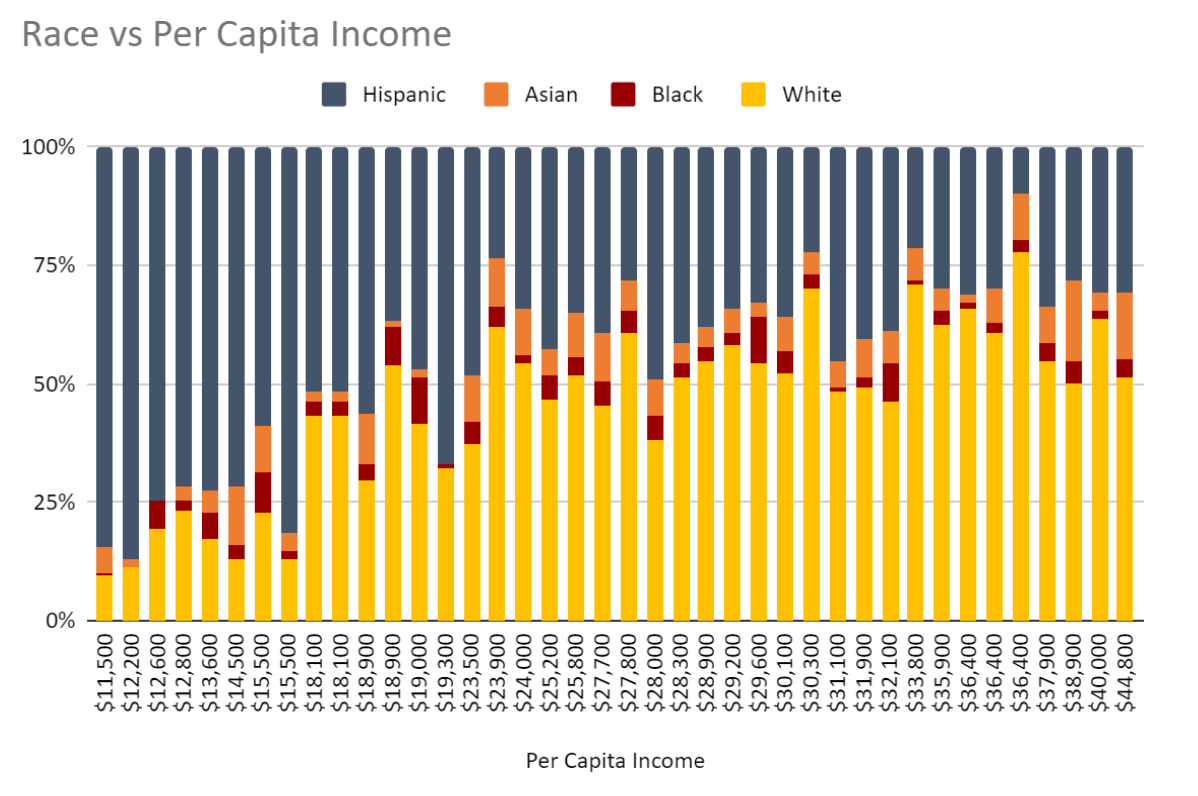A Statistical Analysis on Park Relationships with Socioeconomic Factors in the City of Modesto
DOI:
https://doi.org/10.58445/rars.45Abstract
Parks serve as a safe place for people from all walks of life to spend time recreationally. Parks are a good thing to have in cities, but many studies have found that lower-income groups and minorities are at a disadvantage when it comes to access, equity, and quality of parks. This study focuses on socioeconomic conditions and how they correlate with data from other parks to find patterns between groups of census tracts in Modesto. The main independent variables in this study are location, per capita income, population, and racial data. These are compared to amenities, number of parks, and park access to reveal patterns about them. The data was collected through existing sources, such as the Healthy Places Index and the City of Modesto’s park database. This study will explore the discrepancy in race and socioeconomic data in relation to park amenities, number of parks, and park access in four regions of Modesto. I hypothesize that per capita income and the number of parks, amenities, and access are correlated positively while percent minority groups and the dependent variables are inversely related. However, the study found that park access was relatively equal between all income groups, the number of parks was similar between population and the ratio of amenities per park was also not influenced much by income or race. That said, this study is simply the beginning of a more complex analysis of parks that is sure to come in the future.
References
Abercrombie, Lauren C et al. “Income and racial disparities in access to public parks and private recreation facilities.” American journal of preventive medicine vol. 34,1 (2008): 9-15. doi:10.1016/j.amepre.2007.09.030
Scott, David. (2013). Economic inequality, poverty, park and recreation delivery. Journal of Park and Recreation Management. 31. 2013.
Katherine B. Vaughan, M.P.H., Andrew T. Kaczynski, Ph.D., Sonja A. Wilhelm Stanis,
Ph.D., Gina M. Besenyi, M.P.H., Ryan Bergstrom, Ph.D., Katie M. Heinrich, Ph.D., Exploring the Distribution of Park Availability, Features, and Quality Across Kansas City, Missouri by Income and Race/Ethnicity: an Environmental Justice Investigation, Annals of Behavioral Medicine, Volume 45, Issue suppl_1, February 2013, Pages S28–S38, https://doi.org/10.1007/s12160-012-9425-y
Vaughan, Christine A et al. “Park Use in Low-Income Urban Neighborhoods: Who Uses the Parks and Why?.” Journal of urban health : bulletin of the New York Academy of Medicine vol. 95,2 (2018): 222-231. doi:10.1007/s11524-017-0221-7
Public Health Alliance of Southern California, Healthy Places Index, 2018. https://map.healthyplacesindex.org/?redirect=false
Laurie Smith, City Parks and Trails, Modesto, CA, CivicEngage. https://modestogov.com/Facilities?clear=False. Accessed 9 Oct. 2022.
.“Tuolumne River Trust.” Tuolumne River Trust, https://www.tuolumne.org. Accessed 15 Oct. 2022.
Branch , Geographic Products, and U.S. Census Bureau. Census Tracts.
Noe-Bustamante, Luis, et al. “4. Measuring the Racial Identity of Latinos.” Pew Research Center’s Hispanic Trends Project, 4 Nov. 2021, https://www.pewresearch.org/hispanic/2021/11/04/measuring-the-racial-identity-of- latinos/
Bureau, US Census. “Race.” Census.gov, https://www.census.gov/programs-surveys/acs/. Accessed 31 Oct. 2022.

Downloads
Posted
Versions
- 2022-12-23 (3)
- 2022-12-23 (2)
- 2022-10-31 (1)
Categories
License
Copyright (c) 2022 Manav Kumar

This work is licensed under a Creative Commons Attribution-NonCommercial-NoDerivatives 4.0 International License.

